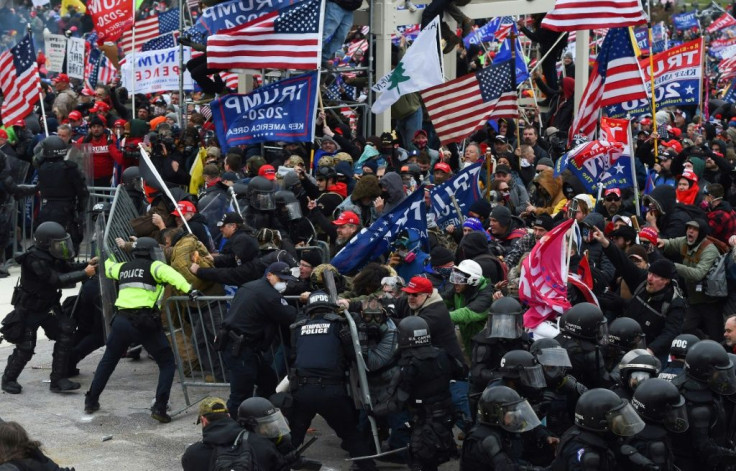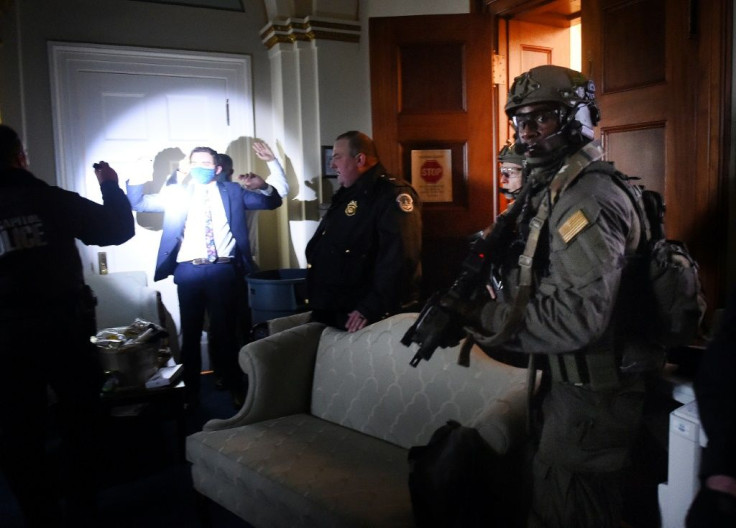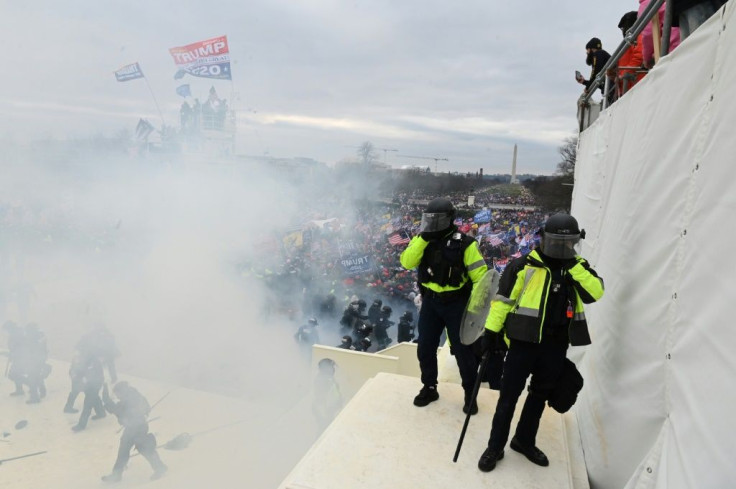After Mob Siege, Capitol Police Take Heat For Security Response
How a ragtag mob egged on by Donald Trump managed to overpower security and invade the US Congress triggered anger and disbelief in Washington on Thursday.
The debacle forced the resignations late Thursday of Capitol Police chief Steven Sund and the top security officials of the two chambers of Congress, the sergeants-at-arms.
As dust settled on the extraordinary scenes of a besieged seat of power, voices were quickly raised to ask why the 2,300-strong Capitol Police force so easily gave way to protesters, appearing not to try to arrest them.
And the ease with which they breached security barriers to rampage through the white-domed building at the center of Washington -- terrorizing lawmakers and briefly shutting down Congress -- laid bare a serious security threat two weeks before President-elect Joe Biden's inauguration.
Top lawmakers in the House and Senate demanded investigations into the breach, saying it exposed a weakness that should not be have been there since the September 11, 2001 attacks.
"It was well known that extremist groups, some of whom desire to foment civil war, were planning violence," said Bennie Thompson, chairman of the House Homeland Security Committee.

"Nearly 20 years after 9/11, we still clearly have massive gaps in the Federal government's terrorism preparedness and response capabilities," he said.
The images of hundreds of Trump supporters easily pushing into the main building of Congress despite a lockdown, striding through the halls and climbing on statues while guards had guns drawn to protect lawmakers, have never been seen before by Americans.
Police and defense officials said they had been planning for the January 6 rally of violent Proud Boys and other militia, QAnon conspiracy theorists, and other die-hard Trump followers for weeks.
It was timed for the day Congress was to confirm Joe Biden's victory over Trump in the November 3 election -- a verdict Trump and followers have refused to accept.
Despite many planning meetings and tracking the likely attendees, officials said they didn't expect the group to besiege the Congress.

"The USCP had a robust plan established to address anticipated First Amendment activities," said Sund, referring to protests protected by the US constitution's guarantee of free speech.
"But make no mistake -- these mass riots were not First Amendment activities; they were criminal riotous behavior."
The unique structure of policing in Washington, the US capital with broad swathes of federal government property but also a city unto itself, fed into the disastrous attack on Congress.
The Capitol Police control the area around the Congress, and the city's larger, better-trained force can't go there unless asked.

The siege of the Capitol building was well underway when they were called in at about 1.00 pm (1800 GMT) Wednesday, said metropolitan Washington police chief Robert Contee.
"Things were already pretty bad at that point," he told a press conference Thursday.
The city government also directs local National Guard forces which had been called up to help with the demonstrations.
But Mayor Muriel Bowser said she was never asked for their help Wednesday.
"The Capitol Police and the leadership at the Capitol, they did not make the decision to call in guard support. I cannot order the army, National Guard to the United States Capitol grounds."
In fact, said Army Secretary Ryan McCarthy, through multiple meetings with all the stakeholders including Capitol Police, Sund's team repeatedly rejected offers of provisional support.
"There was no request and it was necessary to have requests for planning and coordination of any sort to be conducted in the event of a crisis situation," said McCarthy, who oversees the national Guard in the US capital.
The breach was embarrassingly easy and clearly dangerous.
Capitol Police had their weapons drawn at several points but didn't stop the breach. At one point, however, one officer fired his weapon at the demonstrators, hitting and killing a woman.
Several protesters were arrested with weapons and two pipe bombs and a car laden with Molotov cocktails were also discovered by the Capitol.
Among the crowd of Trump fans were a number of members of armed militia groups known to be a threat.
Some were from Michigan, where last summer a similar pro-Trump group heavily armed with assault rifles, invaded the Michigan state capitol to protest Covid-19 controls.
In October the FBI arrested 13 in a plot to kidnap and possibly execute Michigan Governor Gretchen Whitmer, a critic of Trump.
And the FBI has called right-wing extremists the biggest threat of domestic terrorism.
But Contee admitted they didn't know what the protesters had planned.
"There was no intelligence that suggested there would be a breach of the US Capitol," he said.
Bowser and Biden both pointed out that the Trump administration treated the Black Lives Matter protesters who descended on Washington last year much more harshly than those rioting on Wednesday.
McCarthy said the Interior and Homeland Security departments which sent in law enforcement last summer for leftist protests didn't request any forces this time.
© Copyright AFP 2024. All rights reserved.





















